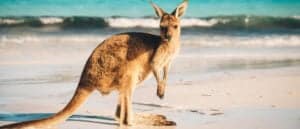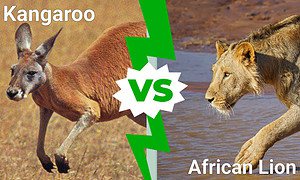Kangaroos are iconic Australian animals who have long been used as a symbol within the country to represent moving forward. There are four species and they are herbivores who roam around grazing on grass and leaves. Kangaroos are famed for their unique structure – long back legs, sturdy tail, bounding gait, and pouches that they carry their young in. But what are kangaroos? Is a kangaroos a mammal, marsupial, or rodent? Join us as we discover just which one they are and exactly what the differences are between the three.
What are Mammals, Marsupials, and Rodents?
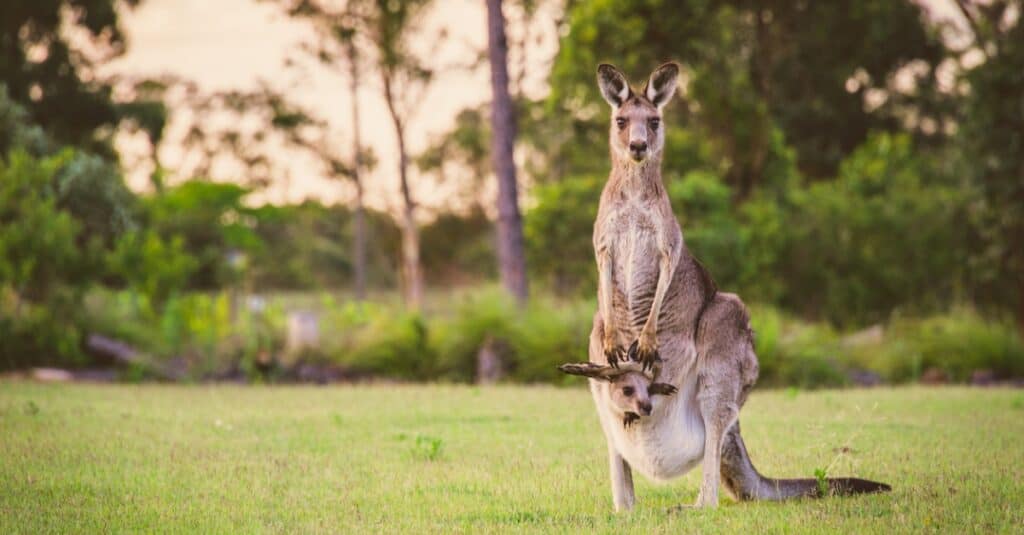
Kangaroos are best known for their pouch that they carry their joey in
©iStock.com/Andrew Coleman
Mammals, marsupials, and rodents are all animals that have different characteristics that make them distinguishable. However, it’s not quite as simple as that as rodents and marsupials are actually mammals too. How can that be though?
Mammals are a large class of animals with around 6,400 species currently which are found all around the world. They are best known for having mammary glands that they use to produce milk and nurse their young with. However, mammals are divided into three major groups – monotremes, marsupials, and placental mammals. Monotremes are egg-laying mammals – such as platypuses and echidnas – and marsupials are pouched mammals. Placentals are animals that use a placenta to nourish their embryos throughout their entire development in the womb – such as humans. Rodents also come under this group, along with the vast majority of other mammals.
Marsupials are pouched mammals that are native to Australasia and the Americas and there are around 330 different species. They are best known for their pouches that they use to carry their young around in.
Rodents are the largest group of mammals and make up around half of all mammal species. They are highly adaptable and live in a variety of habitats. Rodents are placental mammals and, as well as using a placenta to nourish their embryos, they are characterized by their incisor teeth which never stop growing. Most also have short limbs and long tails.
Differences between Mammals, Marsupials and Rodents
There are quite a few distinctive differences between mammals, marsupials, and rodents. These differences make it much easier to determine which one kangaroos are. Check out the chart below to learn a few of the main differences.
| Mammal | Marsupial | Rodent | |
| Location | Worldwide | Australasia and the Americas | Worldwide |
| Pouch | No | Yes | No |
| Incisors that grow continually | No | No | Yes |
| Sweat glands | Yes | No | No |
| Placenta | Depends on the subgroup | No | Yes |
| Offspring at birth | Depends on the subgroup | Tiny and undeveloped | Fully developed |
Offspring

Kangaroos give birth to tiny undeveloped joeys that live in their mother’s pouch for several months
©iStock.com/burroblando
One of the main things that sets marsupials, mammals and rodents apart is what their offspring is like at birth. Marsupials and rodents are both subgroups of mammals – marsupials being pouched mammals and rodents being placental mammals, and the final sub-group being montremes (egg-laying mammals). Which subgroup an animal is in determines what their offspring are like at birth.
As rodents are placental mammals they use a placenta to nourish their embryos until birth. This means that the embryo develops completely inside the womb and a fully developed offspring is born. Monotremes – such as platypuses and echidnas – lay eggs rather than giving birth to live young. However, they still nurse them once they have hatched.
However, marsupials give birth tiny, under-developed offspring. This is why their offspring then crawl into a pouch for several months after birth so that they can continue their development. Instead of laying eggs or feeding their unborn young via a placenta, their fertilized eggs are surrounded by chorion and amnion membranes. However, even though the egg is surrounded, it doesn’t form a typical egg shell like monotremes (or birds) do. Instead, a tiny offspring is born after a very short gestation period (up to four or five weeks).
Pouch
Easily the most distinctive feature of a marsupial is their pouch. As we’ve just mentioned, marsupials give birth to offspring that are extremely small and underdeveloped. This is why female marsupials have pouches – so that their tiny offspring can climb in after birth and finish developing in safety. Just like a womb, a marsupials pouch expands as their baby grows.
Teeth
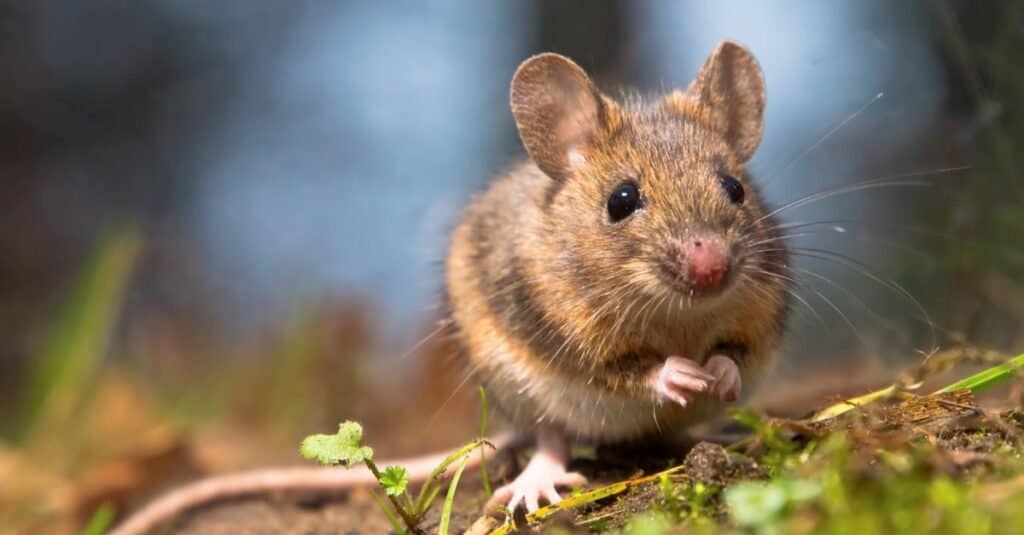
Rodents have incisors that never stop growing
©iStock.com/CreativeNature_nl
Another difference between mammals, marsupials, and rodents is their teeth. In fact, rodents teeth are what sets them apart. This is because their incisor teeth never stop growing. As their incisors don’t stop growing they have to constantly chew on things (such as wood) to wear them down. Conversely, animals such as beavers need their teeth to grow constantly because they’re always wearing them down quickly by chewing on trees to build dams with.
Marsupials generally have more teeth than placental mammals – often between 40 and 50. They have three premolars and four molars on each side of their jaw, both upper and lower, while most placental mammals have four premolars and three molars. They also have four or five incisors upper and lower each side, but their incisors do not grow constantly like rodents incisors do.
What are Kangaroos?
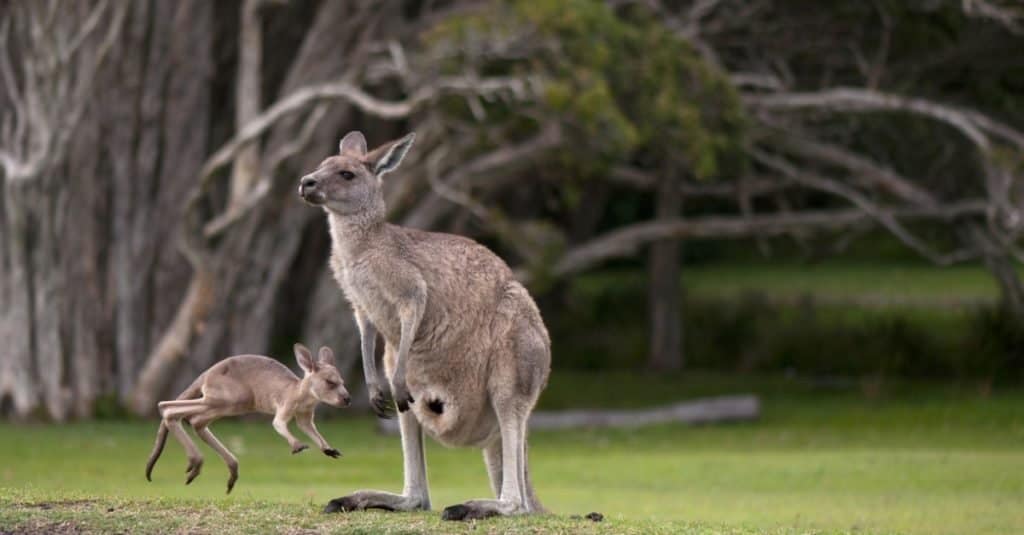
Kangaroos are marsupials which are also known as pouched mammals
©Kjuuurs/Shutterstock.com
Kangaroos are marsupials. However, as marsupials are one of the three subgroups of mammals, kangaroos are also mammals, or “pouched mammals”. Kangaroos give birth to a tiny, undeveloped joey after a very short gestation period. When kangaroos gives birth the joey is only around one inch long. Their hind legs are barely distinguishable, and their main feature is their tiny clawed forepaws which they need for crawling to the pouch with. Although it is born alive and is capable of crawling into the pouch, the tiny joey is so undeveloped it is closer to a foetus form.
A kangaroos pouch is a specialized nursery that is a safe haven for the tiny young joey. In the pouch are four teats that produce different milk for the age of the joey that is being fed. Once the tiny joey has crawled into it they take a teat into their mouth. The teat then expands in its mouth so that it can remain latched on and milk is then produced at intervals for the joey. This is because at this stage it lacks the muscles to suckle. Once the joeys jaw has fully formed it is able to release from the teat and suckle whenever it wants. The young joey remains in the pouch until it is fully developed and at around six months old it begins to spend some time outside the pouch.
The photo featured at the top of this post is © iStock.com/slowmotiongli
Thank you for reading! Have some feedback for us? Contact the AZ Animals editorial team.




